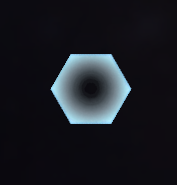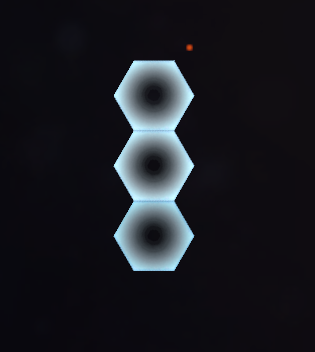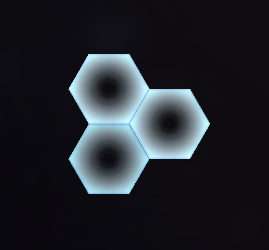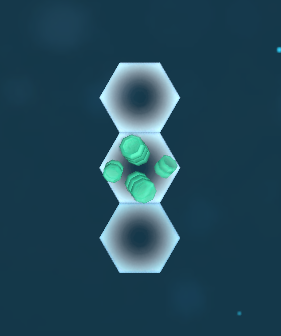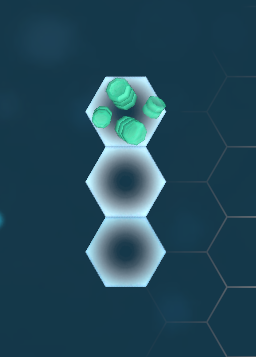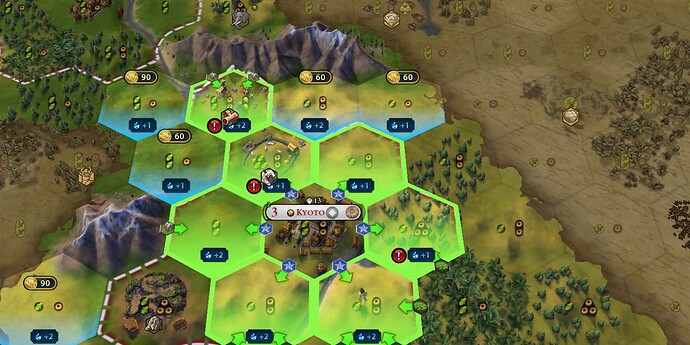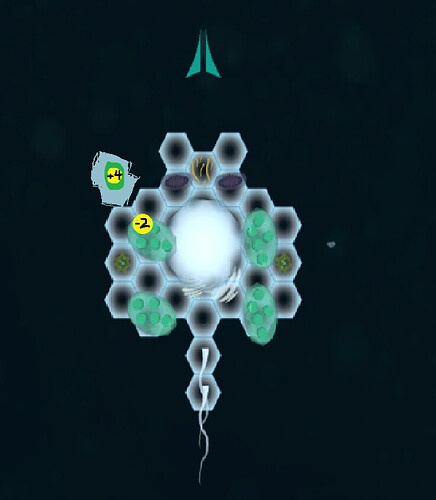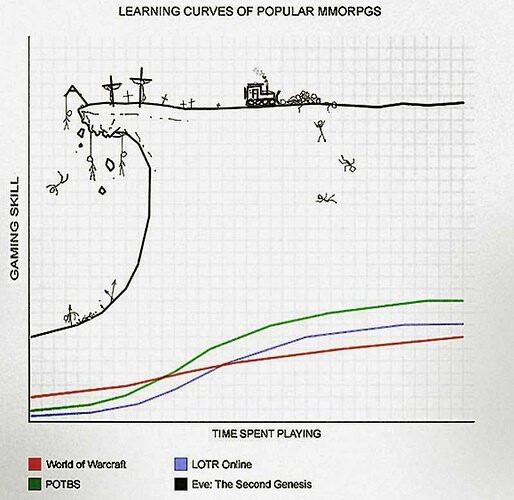I’ve been considering the underlying game design philosophy of Thrive and have come to the conclusion that we might benefit from introducing another layer of simple detail for the player to consider in building their organism.
Right now, I think we have established our base mechanics well and have a very smooth and functional editor, with well-defined parts and an easy to understand editor. But in my opinion, I think editor gameplay - more specifically, player choices within the editor - might be a bit simple and lack depth. You place parts to boost stats, and besides making sure you have a net-bonus ATP production system, there isn’t much more of a decision to make. Of course, it is important not to overwhelm the player in tedium and details regarding the editor when, ideally, most of the gameplay will be happening outside of the editor. But at the same time, I think it is important that trips to the editor are not just thoughtlessly placing two parts down.
Many other good games which use an editor mechanic also have factors external to a placeable part for the player to consider; these factors are an important measure of progression, providing challenges and limitations for the players to creatively address. For example, alongside money, Kerbal Space Program also challenges the player to create an aerodynamically sound vehicle, accounting for factors such as center of mass, drag, and air flow. And though I personally don’t know much about it, the fun of a game like Factorio isn’t necessarily the action of placing a part down itself, but instead the relationship between parts: the challenge is in creating a functional system. And though the mechanic itself isn’t liked by many, even Spore introduced another factor external to a part itself for the player to grapple with in the complexity meter.
Design Philosophies and Progression
One of the most important decisions we’ve made regarding the design for Thrive is our reluctance to have anything reminiscent of “flat” upgrades to organelles - for example, spending MP to make mitochondria go from producing 6 ATP to 8 ATP, and so on. Rather, we’ve decided to go with a system of progression that involves “specialization” - changing aspects of your organism as a whole to become better suited at a specific function, at the potential detriment of other functions. This is because we want to emphasize the fact that no adaptation is necessarily better than another adaptation; rather, one adaptation is more capable in certain conditions than another adaptation which is more capable in its own conditions. And similarly, an adaptation is better than another adaptation within certain body plans, niches, and behaviors. There are no “levels” in Thrive when it comes to “parts,” only specializations and complexity levels.
This effectively means that we want the player to creatively alter the very nature of their organism to become better at something, asking them to be aware of what they are exchanging as a result of their decisions. For example, rather than flatly unlocking chloroplasts, players will alter their nature and morphology to become better-suited for photosynthesis.
The Problem
The “specialization” line of thought is a very cool way of thinking of progression that, if executed well, will result in an amazing sandbox simulation of evolution. The problem right now however is that I don’t think there are enough ways to “shape your organism” into becoming more ideal for a specific function to warrant much depth and strategy within the editor. For example, let’s say I want to “shape my organism” into becoming better suited for photosynthesis. This is what I can do in the editor to achieve that goal…
- Place more thylakoids and chloroplasts.
That’s it really. You do have to attach enough mitochondria/metabolosomes/whatever to become ATP sufficient, but besides placing more of the part, there isn’t really much for the player to do.
Now, that was a bit of a cherry-picked example in that photosynthesis is a pretty simple strategy. For example, if I want to make a successful predatory organism, I would consider…
- Placing more digestive enzymes to increase digestion.
- Placing more external parts to become better at catching/killing prey.
- Placing enough internal organelles to fuel these activities.
That is better, but I still feel that the line of thought is pretty simple, repetitive, and can be made to be more engaging. Because ultimately, the only thing you are really thinking in the editor is “should I place another part down”, and I think a good simulation game should have a bit more level of detail than that. Just look at the first verb of every option I’ve outlined in the two examples above. As games like factorio and KSP demonstrate, it’s not the parts themselves that create the engagement, but rather the way you use those parts in the face of constraints.
We do have some sort of constraint in the form of osmoregulation. But it is so tremendously easy to overcome osmoregulation by, you guessed it, placing more mitochondria. And of course, we do have the constraint of MP, which only serves to slow down the placing of parts.
Let me describe some of the thought process that goes on behind a trip to the editor of KSP in contrast…
- What part do I place?
- If I place that part, how is my center of gravity affected?
- Is the structure as a whole robust enough to withstand the force of propulsion?
- Am I generating enough lift to combat gravity?
- Am I effectively combating drag?
- Can my vessel withstand the heat of atmospheric re-entry?
The number of variables isn’t what I am trying to argue for here - there are so many factors to consider in evolution, that implementing everything would make this game very inaccessible. What is instead important to consider is the nature of these different challenges. For many of these questions, it isn’t as simple as identifying and placing a part - it’s orienting your parts in a way that makes the vehicle as a whole aerodynamic and successful in space-flight. Not every question requires a brainstorm - in some playthroughs I watched, players made their ships more robust by just placing more connections. It’s variety that is important.
For example, consider the answer to various questions in Thrive. How do I make a more efficient photosynthesizer? Place more thylakoids and chloroplasts. How do I make a more energy-productive organism? Place more mitochondria. How do I make a faster organism? Place more flagella. How do I make a more damaging organism? Place more pilus/toxins. How do I make a faster organism? Place more flagella. All the problems a player might have can be answered by the placement of a part, and to me, that indicates we are lacking a bit of depth and creativity.
I hope this clearly demonstrates my main point and convinces you. We don’t need more mechanics just to give the player more systems to micromanage. We need problems that cannot be solved by just placing down a part and thinking nothing more of the issue.
THE SOLUTION - SURFACE AREA AND VOLUME
I am arguing that we should implement a constraint for the player to wrestle with to make editor gameplay more engaging - like how variables such as drag and center of gravity are constraints in KSP. In my view, a good constraint for Thrive…
- Isn’t “flat” like the complexity meter of Spore, and instead is fluid. There isn’t an overbearing factor outright blocking the player from doing something, it just makes certain things require thought and deliberation to pull off. In KSP, there are various way to tackle constraints, and these constraints act differently depending on your craft.
- Isn’t solved by the mere act of placing a part like osmoregulation currently works in Thrive. We have enough of those types of constraints - we should now be asking the player to holistically access their organism.
- Isn’t merely a negative in that the player is constantly having to minimize an effect they are trying to avoid. There should be rewards for designing a solid organism, not just the minimizing of costs. For example, creating an aerodynamic spaceship in KSP doesn’t just give you more control over your ship, but can allow you to move at very fast speeds as well.
- Is scientifically accurate, an obvious mandate for this game.
My first thought was something along the lines of creating a “streamlined” cell which will allow you to move better. While I do think that will be a very engaging mechanic for the macroscopic stage, I don’t think it would be appropriate for the Microbe Stage. At the microscopic level, water acts less like the flowing fluid we are familiar with and more like a slush that cells push through. And besides, movement is pretty uniform across all cells - it’s a 2D stage.
As such, I believe surface area and volume are great constraints to implement for various reasons…
- Already Planned - We already are planning to involve surface area and volume for the macroscopic stages. The square-cube law, which we will use as a means of limiting the size of organisms, is entirely a result of surface area and volume ratios. Organ systems as a whole are also defined extensively by surface area and volume - certain skeletal and respiratory structures are more effective at certain sizes as a result of the square-cube law, for example. It would then be worthwhile to involve surface area and volume within the Microbe Stage to introduce the player to a phenomena they will have to be continuously mindful of.
- Important Biological Phenomenon - Cells especially need to be mindful of their surface area and volume. A cell’s surface area facilitates the exchange of resources, and a cell’s volume facilitates the various chemical reactions and processes within a cell.
- A “Fluid” Constraint - Although cells generally prefer a higher surface area to volume ratio, there are various factors and strategies life has undertaken. Some cells seek to maximize surface area, while others do benefit from a bit more balance.
THEORY
4.4: Studying Cells - Cell Size - Biology LibreTexts.
As briefly alluded to above, surface area and volume, and the ratio between them, are important physical characteristics to a cell. Cells need enough surface area to supply their cellular functions with enough resources. The issue is, however, that surface area and volume do not increase equally as an organism increases in size. As the radius of a cell increases, the surface area increases as a square of the radius, while the volume increases as a cube. As such, energy demands wrought on by increased volume with size might not be fueled by a similar increase of resources supplied, with surface area lagging behind.
As such, organisms generally prefer to maximize surface areas. Different cells might prioritize this ratio differently - for example, photosynthetic unicellular organisms might prioritize a greater surface area more than heterotrophic unicellular organisms since they depend a lot more on constantly capturing an environmental resource. However, greater surface area to volume ratios also come with some detriments. A greater surface area can mean a quicker loss of important resources, less resistance to temperatures, and a more delicate organism as a whole (think of a leaf - maximized surface area, but flimsy and delicate).
How Can We Implement Surface Area to Volume?
We can calculate surface area by counting the number of hexes along the membrane of a cell. Volume is a bit more complicated since the cellular stage is 2D, but perhaps it can increase at a higher rate in relation to the total number of hexes counted (to the power of three if we want to be maximally accurate, though we should be mindful of balancing issues). Here is an older thread with a related discussion regarding scaling osmoregulation non-linearly with total hex count:
We can also implement a slider or something in the membrane tab, indicating a cell that is more or less spherical/flat. Though that might now be necessary at all.
The important part then is the ratio between the surface area and the volume. A higher surface area to volume ratio (meaning much more surface area than volume) results in…
Positives
- Faster compound intake
- Boost to photosynthetic capabilities
- Boosted toxin resistance (faster exchange with environment)
- Increased chemoreception range (greater exchange with environment)
- Decreased osmoregulation costs
Negatives
- Decreased health
- Decreased resistance to extreme environmental conditions
- Decreased resistance to currents
And vice versa for a lower surface area to volume ratio, along with any other buffs and debuffs which we discover to be intuitive. If you feel that the benefits to more surface area outweigh the detriments too significantly, keep in mind that a benefit inherent to more volume is the part you’re adding itself.
With that balancing act, we will find two things…
- Players will be vigilant of their surface area, making sure their osmoregulation costs don’t scale up too dramatically.
- Players will also have to gauge just how much surface area they are willing to put on in the face of the listed detriments.
- Players will face some constraint in the face of size, encouraging a bit of prudence and incentivizing multicellularity and colonies.
This intersection creates a lot of interesting design questions. Do you value absorption more than your health? Should you maintain a general balance of things? As a photosynthesizing organism, are you willing to become a more efficient organism at the loss of durability? How should you address toxins? These aren’t immense tasks for the player to balance, but they do offer a good amount of depth for a relatively simple, scientific, and intuitive mechanic. A simple-enough introduction to a mechanic that will act as a constraint in potentially more nuanced ways with the macroscopic stages. A strengthening of our key design idea: there is only specialization, and no adaptation is outright better than another.
And this simple mechanic results in interesting gameplay down the line, even in the early multicellular stage. Imagine making a long high-surface area cell and attaching chemoreceptors on it, and the same for digestive cells. Imagine making large cells that act as armor. This will all organically affect your organism, creating a unique combination of cells working together.
Concluding Thoughts
By now I hopefully have conveyed the value of adding more variables for the player to address.
There are some design questions still remaining, especially around the idea of volume and the exact way to balance everything. As well as how exactly this mechanic could be expanded upon in the later stages I don’t think this is a feature that needs to be implemented soon, but I do think it is important to discuss. We need to encourage a bit more depth to editor gameplay in my opinion.
